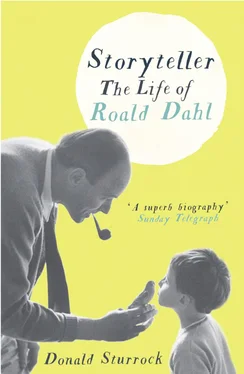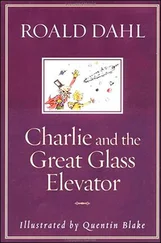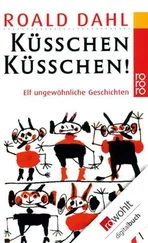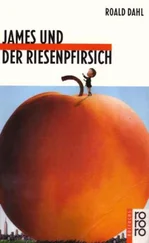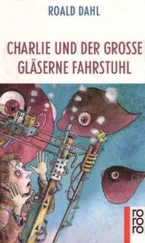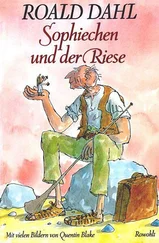Soon, I found myself examining the books in the bookcase by my bedside. There was certainly no biography here. Most of it was crime fiction: Ed McBain, Agatha Christie, Ellery Queen, Dick Francis. As I pulled out a volume, I noticed some ghost stories too, an insect encyclopedia, the diary of a Victorian priest, and a book of poetry by D. H. Lawrence. All of the books looked as if they had been read. I reflected again on our exchange over dinner, and wondered whether Roald had actually met Stravinsky. Perhaps he had simply made that remark to disconcert me? Before I switched off the light, I remember thinking that next day I would flush him out. I would ask him how he had come to have lunch with the great composer. Needless to say, I got distracted and forgot to do so.
It was then February 1986. I had known Dahl six months. The previous autumn, as a fledgling documentary director in the BBC’s Music and Arts Department, I had proposed making a film about him for Bookmark, the corporation’s flagship literary programme. Nigel Williams, the producer, himself an established playwright and novelist, had decided that the Christmas edition of the show would be devoted to children’s literature. Twenty-five years ago this was still a field that many people in the UK arts affected to despise, and for once none of the programme’s older, more experienced directors seemed keen to put forward any ideas. I was the most junior on the team. I wanted desperately to make a film. Any film. So I took my chance. It was an obvious suggestion — a portrait of the most famous and successful living children’s writer. The motivation however behind my plan was largely opportunistic. At that point, I had read none of Dahl’s children’s fiction other than Charlie and the Chocolate Factory. On the other hand, as a thirteen-year-old, I had read most of his adult short stories, feasting on them with concentrated relish from behind a school desk during maths lessons. My adolescent mind had revelled in their grotesqueries, their complex twists and turns, and their spare, elegant, strangely sexy prose.
I remember Nigel Williams’s smile. How he looked at me when I mentioned Roald Dahl. It was knowing, almost wicked. “Okay,” he said. “If you can persuade him to do it.” I paused. Was he thinking about money? The programme had a tiny budget and always paid its contributors the most modest of disturbance fees. It wasn’t cash, however, that was on Nigel’s mind. “You know his reputation?” he asked rhetorically. “Unbelievably grumpy and difficult. He’ll never agree to take part.” I nodded, although this was actually news to me, for my impression of Dahl the man at that point was in fact one of singular lightness. Four years earlier, while I was an undergraduate, he had taken part in a debate at the Oxford Union. “Romance is bunk” was the motion. Dahl had contributed to it memorably, arguing that romance was no more than a euphemism for the human sex drive. He was a great entertainer — witty, subversive, and often risque. At one point he challenged a young woman in his audience to try and “get romantic” with a eunuch. At another he joked that a castrated male was similar to an aeroplane with no engine, because neither could get up. As I walked out of Nigel’s office, all this was still fresh in my memory. Maybe Dahl will be cantankerous, I thought, but I am sure he will be funny, too. I discovered from press cuttings that he lived in a village called Great Missenden. I searched a telephone directory for Dahl, R. and there was his phone number. Ten minutes later I was calling him to discuss the project. Our conversation was brief and to the point. “Come to lunch,” he said. “There are good train services from Marylebone.”
A week later, I was standing outside the bright yellow front door of Gipsy House, his modest eighteenth-century whitewashed home. I rang the bell. An explosion of dogs barking heralded the arrival of a gigantic figure in a long red cardigan. He looked down at me. He was six foot five inches tall, craggy and broad of beam. His body seemed larger than the doorway and far, far too big for the proportions of the cottage. He ushered me through into a cosy sitting room where a log fire burned generously in the fireplace. He seemed a trifle surprised. I asked if I had got the date wrong. “No,” he said. “I was expecting you.” He asked me to wait a moment, then left the room. His strides were huge and ponderous, but strangely graceful — a bit like a giraffe. On one wall a triptych of distorted Francis Bacon heads glared out at me alarmingly, reminding me that for years, Dahl’s adult publishers had dubbed him “the Master of the Macabre”. On an adjacent wall, another Bacon head — this one a distorted swirl of green and white — returned my gaze. Around them a dazzlingly eclectic group of paintings and artefacts decorated the room: colourful oils, a collection of outsize antique Norwegian pipes, a primitive mask, a sober Dutch landscape and some stylized geometric paintings. I learned over lunch that these were the works of the Russian Suprematists: Popova, Malevich and Goncharova.
His wife Liccy (pronounced “Lici” as in the middle two syllables of her name, Felicity) returned five minutes later and suggested I go through into the dining room, where he was waiting for me. Over a lunch of smoked oysters, served from a tin — I don’t recall any wine — we discussed the documentary. In the week leading up to our meeting I felt I had become an expert on his work and had read everything of his that I could get my hands on. I asked him some questions about his early life and about childhood. He told me how easy he found it to see the world from a child’s perspective and how he thought that this was perhaps the secret to writing successfully for children. His memoir of childhood, Boy, had recently been published. I wanted to use this as the backbone of the film and so we talked about Repton, the school where he had spent his teenage years, fifty years earlier. He told me what a miserable time he had had there and we talked about the ethics of beating, for which the school was famous. We pencilled some provisional shooting dates in his diary. Then I asked whether I could see his writing hut. I had read about it and wanted to film there. I anticipated he might say no and tell me that it was too private a place to show to a film crew. But he did not bat an eyelid, and, after lunch, he took me to see it. We walked down a stone path bordered with leafless lime saplings, tied onto a bamboo framework that arched gently over our heads. He explained to me that in time the saplings would grow around the structure and make a magical, shady tunnel.
He opened the door to the hut and I went inside. An anteroom, stuffed with old picture frames and filing cabinets, led directly into his writing space. The walls were lined with aged polystyrene foam blocks for insulation. Everything was yellow with nicotine and reeked of tobacco. A carpet of dust, pencil sharpenings and cigarette ash covered the worn linoleum floor. A plastic curtain hung limply over a tiny window. There was almost no natural light. A great armchair filled the tiny room — Dahl frequently compared the experience of sitting there to being inside the womb or the cockpit of a Hurricane. He had chopped a huge chunk out of the back of the chair, he told me, so nothing would press onto the lower part of his spine and aggravate the injury he suffered when his plane crashed during the war. A battered anglepoise lamp, like a praying mantis, crouched over the chair, an ancient golf ball dangling from its chipped arm. A single-bar electric heater, its flex trailing down to a socket near the floor, hung from the ceiling. He told me that by poking it with an old golf club he could direct heat onto his hands when it was cold.
Читать дальше
